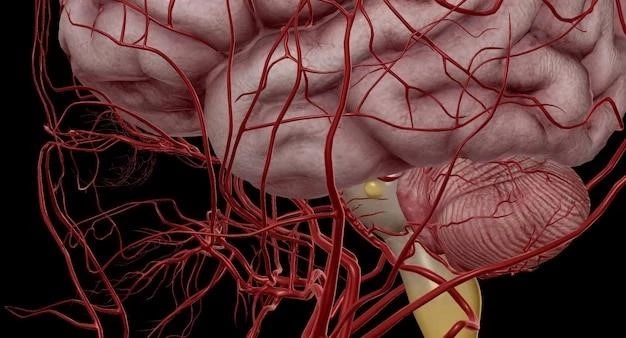Angiomatosis Encephalotrigeminal, also known as Sturge-Weber Syndrome, is a rare neurocutaneous disorder characterized by the presence of facial capillary malformations and leptomeningeal angiomas․ It typically presents with seizures, glaucoma, intellectual disability, and other neurological manifestations․
Warrior
© 2021 Professional Assistant LLC․ All rights reserved․
Overview of Angiomatosis Encephalotrigeminal
Angiomatosis Encephalotrigeminal, or Sturge-Weber Syndrome, is a rare neurocutaneous disorder․ It features facial capillary malformations and leptomeningeal angiomas․ Symptoms may include seizures, glaucoma, intellectual disability, and other neurological issues․ This condition requires comprehensive diagnostic evaluation and tailored treatment approaches․
Causes of Angiomatosis Encephalotrigeminal
The exact cause of Angiomatosis Encephalotrigeminal, also known as Sturge-Weber Syndrome, is not fully understood․ It is believed to be associated with somatic mutations occurring early in fetal development, affecting blood vessels in the brain and face․ This condition is not inherited but arises sporadically in most cases․ Research is ongoing to further elucidate the pathogenesis of this rare disorder․
Symptoms of Angiomatosis Encephalotrigeminal
The symptoms of Angiomatosis Encephalotrigeminal can vary but commonly include seizures, facial birthmarks known as port-wine stains, glaucoma, developmental delays, hemiparesis, and cognitive impairment․ Individuals may also experience neurological deficits, such as migraines, strokes, and intellectual disability․ Early diagnosis and management of these symptoms are crucial to improving the quality of life for patients with this rare condition․
Diagnostic Procedures for Angiomatosis Encephalotrigeminal
Diagnostic procedures for Angiomatosis Encephalotrigeminal typically involve a combination of imaging studies, such as MRI and CT scans, to assess brain abnormalities․ Skin biopsies may be performed to examine the characteristic facial birthmarks․ Ophthalmologic evaluations can detect eye complications like glaucoma․ Genetic testing may also be utilized to identify potential underlying mutations contributing to the condition․
Treatment Options for Angiomatosis Encephalotrigeminal

Treatment for Angiomatosis Encephalotrigeminal aims to manage symptoms and complications associated with the condition․ Depending on the individual’s needs, interventions may include antiepileptic medications to control seizures, laser therapy for port-wine stains, surgical procedures to address glaucoma, and physical or occupational therapy to improve motor function․ A multidisciplinary approach involving neurologists, ophthalmologists, dermatologists, and other specialists is often necessary to provide comprehensive care․
Management of Symptoms in Angiomatosis Encephalotrigeminal
Effective management of Angiomatosis Encephalotrigeminal involves a holistic approach to address the diverse symptoms that may arise․ Symptomatic treatment strategies may include medications to control seizures, intraocular pressure, and pain․ Regular monitoring by healthcare professionals is essential to detect and address any emerging complications promptly․ Additionally, supportive therapies, such as physical and occupational therapy, can help enhance quality of life for individuals living with this complex condition․
Pathophysiology of Angiomatosis Encephalotrigeminal
The pathophysiology of Angiomatosis Encephalotrigeminal involves abnormal vascular development affecting the brain and face․ Mutations in the GNAQ gene are often implicated in the development of the condition․ These mutations lead to the overgrowth of blood vessels, resulting in the characteristic features of Sturge-Weber Syndrome․ Understanding the underlying pathophysiological mechanisms is crucial for advancing diagnostic and therapeutic strategies for individuals affected by this rare disease․
Epidemiology of Angiomatosis Encephalotrigeminal
Angiomatosis Encephalotrigeminal, or Sturge-Weber Syndrome, is a rare disorder with an estimated incidence of 1 in 50٫000 live births․ It affects both males and females equally and can occur sporadically in most cases․ The condition is typically diagnosed in infancy or early childhood٫ with variable clinical presentation and severity․ Understanding the epidemiology of this rare disease is essential for early detection٫ appropriate management٫ and improving outcomes for individuals with Angiomatosis Encephalotrigeminal․
Prognostic Factors for Angiomatosis Encephalotrigeminal
Prognosis in Angiomatosis Encephalotrigeminal varies depending on factors such as the extent of brain involvement, presence of neurological complications, and response to treatment․ Early detection and intervention are key in improving outcomes․ Individuals with milder symptoms and effective management strategies tend to have better prognoses․ Regular follow-up care and a multidisciplinary approach can help optimize the prognosis for individuals affected by this complex condition․
Management Strategies for Angiomatosis Encephalotrigeminal
Management of Angiomatosis Encephalotrigeminal involves a comprehensive approach tailored to the individual’s needs․ Treatment strategies may encompass seizure management with antiepileptic medications, ophthalmologic interventions for glaucoma, laser therapy for facial birthmarks, and supportive therapies like physical and occupational therapy․ Regular monitoring and coordinated care by a team of specialists are essential for optimizing outcomes and improving quality of life for individuals affected by this challenging condition․
Recent Advances in the Understanding of Angiomatosis Encephalotrigeminal
Recent advances in research have shed light on the genetic basis of Angiomatosis Encephalotrigeminal, uncovering key mutations in the GNAQ gene․ Novel treatment modalities, including targeted therapies and gene-based approaches, are being explored to address the underlying mechanisms of this rare disease․ Ongoing studies aim to enhance diagnostic methods and refine personalized treatment strategies for individuals with Angiomatosis Encephalotrigeminal․
Ongoing Clinical Trials for Angiomatosis Encephalotrigeminal
Several ongoing clinical trials are investigating novel therapies and interventions for Angiomatosis Encephalotrigeminal․ These trials focus on enhancing symptom management, targeting specific genetic mutations, and improving quality of life for affected individuals․ Collaborative research initiatives aim to advance our understanding of this rare disease and develop innovative treatment strategies․ Participation in clinical trials offers potential benefits for patients and contributes to the advancement of medical knowledge in the field of Angiomatosis Encephalotrigeminal․
Presentation of Angiomatosis Encephalotrigeminal in Pediatric Patients
Angiomatosis Encephalotrigeminal in children often manifests with early-onset seizures, facial port-wine stains, and neurological deficits․ Pediatric patients may experience developmental delays, vision problems, and cognitive impairments․ Prompt diagnosis, multidisciplinary care, and tailored interventions are crucial for managing the complex needs of children with this rare condition․ Close monitoring and support play a vital role in optimizing outcomes and quality of life for pediatric individuals affected by Angiomatosis Encephalotrigeminal․
Tailored Approaches to Diagnosis and Treatment in Children
Diagnosing and treating Angiomatosis Encephalotrigeminal in children requires a specialized approach to address their unique needs․ Pediatric patients may undergo imaging studies, genetic testing, and developmental assessments to create individualized care plans․ Treatment modalities such as anticonvulsant medications, laser therapy, and early intervention programs can help manage symptoms effectively․ Collaborative efforts among pediatric specialists ensure comprehensive and holistic care for children with this rare neurocutaneous disorder․
Psychosocial Impact of Angiomatosis Encephalotrigeminal
Living with Angiomatosis Encephalotrigeminal can have profound psychosocial implications on individuals and their families due to the complex nature of the condition․ Addressing emotional well-being, providing access to support groups, and fostering open communication are essential coping strategies․ Psychological counseling, educational resources, and community networks play a vital role in helping individuals affected by this rare disease navigate the challenges they may encounter․ Developing robust coping mechanisms is key to enhancing overall quality of life and resilience in managing Angiomatosis Encephalotrigeminal․
Coping Mechanisms and Support Resources for Patients and Caregivers
Patients and caregivers facing Angiomatosis Encephalotrigeminal can benefit from various coping mechanisms and support resources․ These may include individual and family counseling, educational materials, respite care services, and peer support groups․ Accessing specialized healthcare providers, advocacy organizations, and online platforms can offer valuable information and assistance․ Developing strong coping strategies, fostering resilience, and building a supportive network are integral to navigating the challenges associated with Angiomatosis Encephalotrigeminal․
Known Risk Factors Associated with Angiomatosis Encephalotrigeminal
Angiomatosis Encephalotrigeminal is primarily a sporadic condition and not typically inherited․ However, known risk factors include early somatic mutations affecting blood vessel development, particularly in the GNAQ gene․ The presence of such mutations can contribute to the manifestation of the disorder․ Understanding these risk factors is crucial for early detection, appropriate management, and genetic counseling for individuals and families affected by Angiomatosis Encephalotrigeminal․
